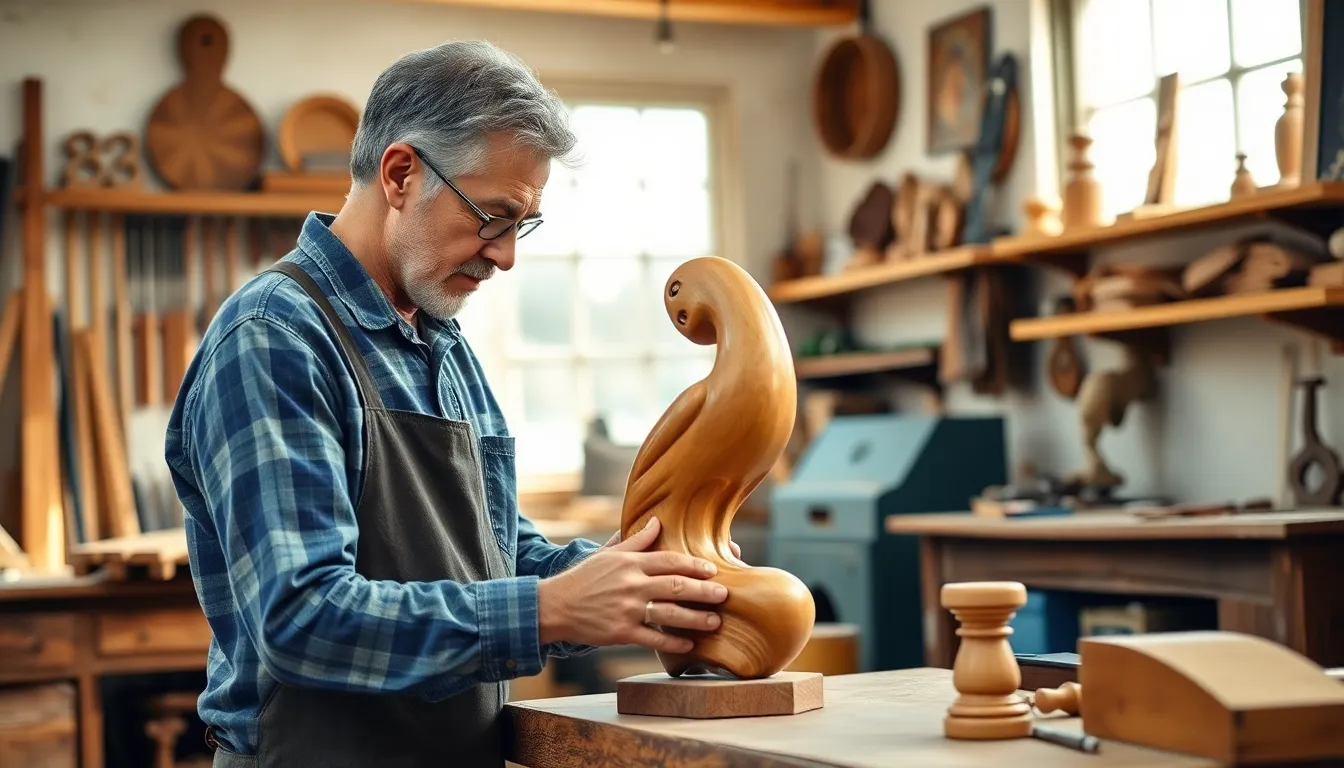Craftsmanship is the unsung hero of our everyday lives, quietly weaving its magic into the fabric of society. From the sturdy chair that holds your weight to the intricate watch ticking away on your wrist, skilled artisans transform raw materials into extraordinary creations. It’s not just about making things; it’s about pouring passion and precision into every detail.
In a world dominated by mass production and fleeting trends, celebrating craftsmanship is like giving a high-five to creativity and dedication. It reminds us that behind every masterpiece lies a story of hard work, skill, and a sprinkle of love. So grab your favorite mug, settle in, and let’s dive into the wonderful world of craftsmanship—where every piece is a testament to human ingenuity and a reason to appreciate the art of making things that last.
Table of Contents
ToggleThe Importance Of Celebrating Craftsmanship
Celebrating craftsmanship plays a crucial role in society. This recognition fosters appreciation for the skill and creativity of artisans.
Historical Significance
Craftsmanship has deep roots in history. From ancient pottery to woodworking, each era showcases unique techniques. Skilled artisans contributed to cultural heritage with their craftsmanship. The Great Wall of China, for example, illustrates architectural mastery. Such creations offer insight into the values and priorities of past civilizations. Many artisans used traditional methods passed down through generations. This connection maintains the integrity and authenticity of their work. Craftsmanship serves as a bridge, linking contemporary society with historical practices.
Cultural Impact
Craftsmanship significantly influences culture. Each handcrafted item reflects the traditions and stories of its creator. Local artisans often contribute to community identity through their work. Markets filled with handmade goods provide unique cultural experiences. Festivals and fairs often highlight regional craftsmanship, fostering connections among locals and visitors. As people engage with handcrafted items, they gain insight into diverse cultures. Supporting artisans strengthens community ties, promotes local economies, and enriches cultural practices. Individual creations resonate with shared values and collective pride, enriching societal fabric.
Different Forms Of Craftsmanship

Craftsmanship exists in various forms, each celebrating skill and creativity through unique techniques and materials.
Traditional Crafts
Traditional crafts encompass skills passed down through generations. Woodworking showcases intricate designs, while pottery employs methods that date back thousands of years. Weaving highlights regional patterns that often tell stories of cultural heritage. Blacksmithing demonstrates strength and precision in shaping metal into functional items. These crafts preserve cultural identity, keeping ancient techniques alive within communities. Each handcrafted piece reflects the artisan’s careful attention to detail and dedication to quality.
Modern Innovations
Modern innovations in craftsmanship blend tradition with contemporary practices. Digital fabrication methods, such as 3D printing, allow artisans to create intricate designs that push the boundaries of creativity. Sustainable materials play a crucial role, enabling craftspeople to respond to environmental concerns while producing unique items. Tech-enabled tools enhance precision and efficiency without compromising artistic expression. Products like smart furniture integrate functionality into design, captivating both consumers and creators. This fusion of old and new showcases an evolving landscape where craftsmanship thrives in diverse forms.
The Role Of Artisans In Society
Artisans play a crucial role in shaping society through their work. Their skills enhance both the economy and community dynamics.
Economic Contributions
Artisans contribute significantly to local and national economies. Craftsmanship creates jobs across various sectors, including textiles, ceramics, and furniture. According to the U.S. Bureau of Labor Statistics, craft industries employ over 1 million people nationwide. Additionally, handmade products often carry higher price points. These premium prices encourage consumers to invest in unique, quality goods. Artisan craftsmanship stimulates local economies by attracting tourists to markets and galleries, providing economic opportunities for neighborhoods. When individuals prioritize buying handcrafted items, they support a sustainable economic model that benefits both artisans and their communities.
Community Development
Community development thrives through the presence of artisans. They foster local pride by preserving traditional techniques. Artisan markets foster social connections, while workshops and classes engage community members and promote skill-sharing. Each handcrafted item represents local culture and heritage, strengthening community identity. Festivals celebrating craftsmanship draw visitors, creating cultural exchange. Artisans often collaborate with local organizations, leading to joint initiatives that enhance community spaces. By promoting artisans, neighborhoods cultivate a sense of belonging and mutual support, vital for overall community growth.
How To Support Craftsmanship
Supporting craftsmanship involves making conscious choices to value handmade goods and opportunities for experiential learning. Shoppers can play an important role by actively seeking out handcrafted items and engaging with artisans.
Buying Handmade Products
Buying handmade products fosters appreciation for skilled artisans. Each purchased item supports local economies and reflects unique artistry. Artisans often share stories behind their creations, adding value beyond mere functionality. Consumers can explore craft fairs and online marketplaces that specialize in artisan products. By choosing handmade over mass-produced, one prioritizes quality and individuality, cultivating relationships with creators. Items such as furniture, jewelry, and home décor showcase distinctive designs, preserving cultural heritage.
Participating In Workshops
Participating in workshops provides hands-on experience and deepens understanding of craftsmanship. Attendees learn traditional techniques and modern practices from skilled artisans. Workshops often focus on specific crafts, such as pottery, woodworking, or textiles, encouraging creativity and skill development. Engaging in these experiences allows individuals to appreciate the process behind each handcrafted item. Participants can connect with local artisans and other craft enthusiasts, fostering a sense of community. Learning from experts highlights the commitment artisans put into their work, enhancing overall gratitude for their craft.
Celebrating craftsmanship is essential for recognizing the dedication and creativity of artisans. By valuing handmade goods, individuals contribute to the preservation of cultural heritage and support local economies. Each handcrafted item tells a story that connects people to their communities and traditions.
Engaging with artisans through markets and workshops not only enhances appreciation for their skills but also fosters a sense of belonging. As society embraces both traditional and modern forms of craftsmanship, it enriches the cultural landscape and encourages innovation. Supporting craftsmanship is a meaningful way to honor the artistry that shapes our world.





